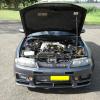Please Take A Look At The Pic.
Announcements
-
Similar Content
-
Latest Posts
-
Sounds perfect! Stay in touch
-
Not ready yet, but maybe later in the year?
-
Hi Luke, haven't thought about it a lot, trying to get the car into the paint shop first. Did you want to make an offer? As stated above, I'm just looking for fair market price.
-
Ask a powder coater? Or ask 31GUN on performanceforums, who is Barrel Bros.
-
Do you have a price in mind yet?
-







Recommended Posts
Create an account or sign in to comment
You need to be a member in order to leave a comment
Create an account
Sign up for a new account in our community. It's easy!
Register a new accountSign in
Already have an account? Sign in here.
Sign In Now